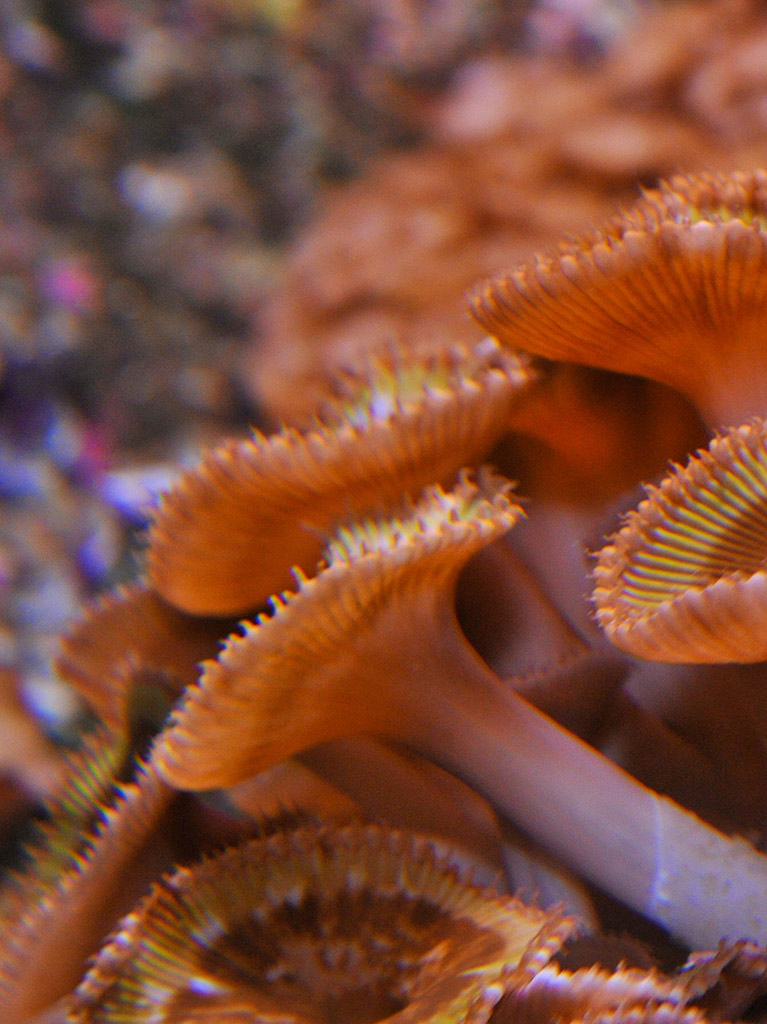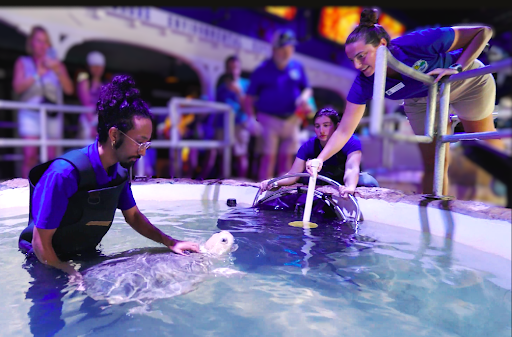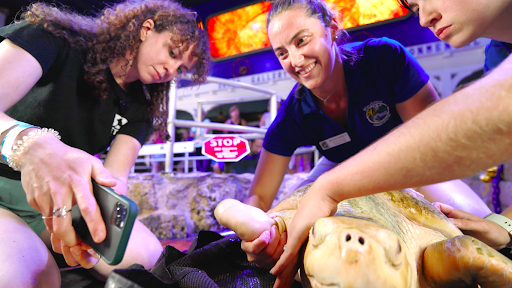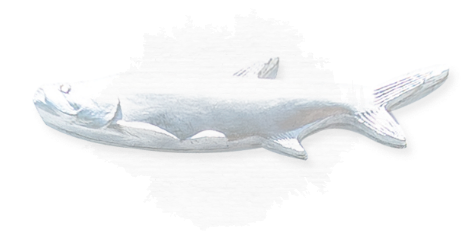The Key West Aquarium is proud to be home to the first sea turtles to receive biomimetic prosthetic flippers in the United States. We have two sea turtles with missing limbs: Rocky, a green sea turtle, and Lola, a Kemp’s ridley. In 1999, Rocky was the victim of a boat strike that resulted in the loss of his front right flipper and a permanent buoyancy disorder, called floater syndrome or bubble butt. He was deemed nonreleasable and came to live at the aquarium to receive lifelong care and act as an ambassador for sea turtles. We have managed his buoyancy with a float and a weight, but the missing flipper left him with the tendency to spin while swimming. Lola was just a hatchling in 2002 when she was found on a beach in Texas with an injury to her front right flipper. She went to Amos Rehabilitation Keep in Port Aransas for treatment and was released after 11 months. Unfortunately, she washed up onshore three days later tangled in fishing line and very ill. After her second round of rehab, she was deemed nonreleasable and ultimately came to the Key West Aquarium in 2008. In 2015, she caught the attention of students from Worcester Polytechnic Institute working on a biomimetic engineering project. They created a prosthetic flipper for Lola that mimics the form and function of her unaffected limb. In 2017, after two rounds of prototypes, Dr. Kevin Carrol of the Hanger Clinic was enlisted to help create the final version of Lola’s flipper, and a flipper for Rocky too! That was almost 10 years ago, and the flippers are due for an update.
We are extremely excited to partner with 3D Pets on the updated design of prosthetic flippers for Rocky and Lola. 3D Pets uses three-dimensional scanning and printing technology to create individualized prosthetics for animals. Their work has primarily been with dogs but translates perfectly to our sea turtles! The process of creating the new flippers began with a visit in April from Lydia Mindek, where she used a scanning application to render a 3D model of Rocky and Lola’s affected limbs. These scans will be used to make cuffs that perfectly fit each turtle’s unique shape. We will be providing updates on this process throughout the year, so stay tuned to our social media channels to follow along.




